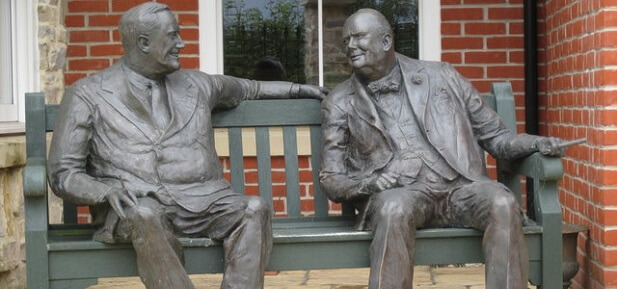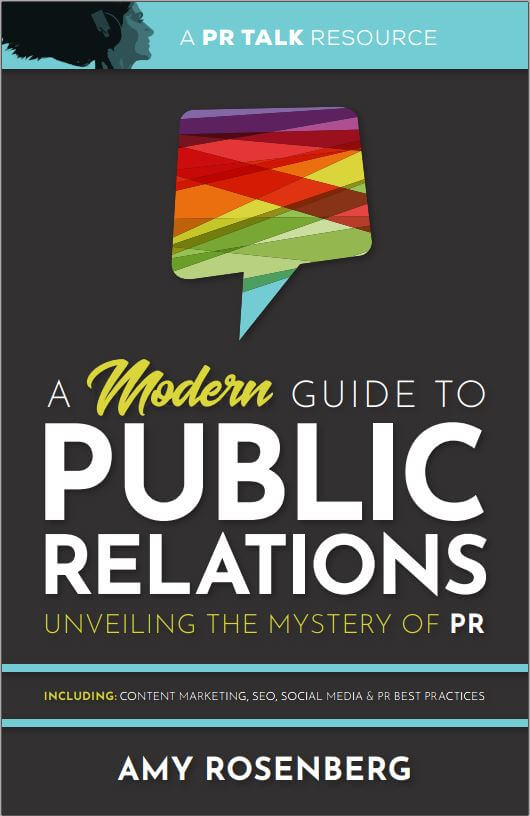Tips for media interviewing, presenting and just talking with a human being.
It was an honor to present at the Northwest Credit Union Association’s Marketers Conference last week, but I’m sure I won’t be the first to say the star of the show was Anthony Huey of Reputation Management Associates. Over the course of three hours he delivered a fun, interactive presentation packed with media training and communication tips. I attempted to take notes but many of it is hard to convey as a camera was used with video being played back and Anthony’s suggestions peppered throughout the replaying.
But here goes, because you need to know this…
Time matters. Fill every second you get.
This doesn’t mean talk all the time! You have 10 seconds to answer questions with the press and 30 seconds to answer questions face-to-face. Even Barak Obama gets just 10 seconds to answer to press. If you go over with press they will just take what they want to create a 10 second sound-bite so you’ve completely lost control of the message.
This is important for everyone—whether you are a CEO trying to pitch a $2 million account or a soccer mom trying to get more field time for her kid’s league.
For example, how do you typically answer the question: “What do you do”? I always reply back with the short, yet firm, response of “I have a marketing firm.” And then I just leave it at that. Well think of all that time I’ve lost! That took about 3 seconds. I have 27 more seconds to fill in any regular conversation. I need to think about whom I am talking with and how they can help me with my agenda.
CONTROL the conversation. Not the other way around.
You cannot wait for the person to ask you the question that will lead you to your talking points. You must fight and take control. Possess an agenda. Satisfy irrelevant questions quickly and then say what you want to say. Use words like “for example” because it forces you to use examples. Examples are good—this gets you to the “how” of it.
Be as succinct as possible. Time is important.
We tend to think of answers like college papers; with an introduction, body and conclusion. Lose the introduction. Get right to the point and stay there. Don’t summarize as this tends to take the audience back to original question—which is not good if it was negative or irrelevant.
Body style/facial gestures.
Stand with force. But not if you are frustrated with someone. Stand at a 40 degree angle if you are. Not face to face—that will only escalate the situation.
Refining messages.
Our homework was to type out 10-15 routine questions we get all the time. And then type down the responses in bullet point form—think of it as the “rolodex of the mind,” as Anthony says. Prioritize the 3-5 most important points.
Create core topics that are more than just the little bits, and then fill in with the “nuggets” (Anthony’s word for “pre-rehearsed ad libs”).
Questions to consider:
- What do you do?
- What makes you different?
Get away from negative questions:
Your job is to address the question and then get away from it as quickly as possible so you can say what you want to. Always get back to your agenda—it is your home base. There are 3 ways to address negative questions:
1. Verbal bridging—gets you from where you are to where you want to be.
- But I can tell you this…[then say whatever you want].
- First of all let’s consider the larger issue…[then say whatever you want].
- And the facts are…[then say whatever you want].
- But in the meantime…[then say whatever you want].
- It’s highly unlikely/likely…[then tell them why].
- Will this bill pass?…It’s too soon to tell…we’re focused on…
2. “Bump and Run”
- Yes/no but…. run to where you want to go (in the conversation!).
- Yes/no however….run to where you want to go (in the conversation!).
- Absolutely/Absolutely Not except…run to where you want to go (in the conversation!).
Even answer positive questions with a “bump” so you can get in different message/offer explanations/examples.
3. “Turn the Table”
This is the most advanced! When you pose a question with a question and turn right around and answer it yourself.
Reporter asks:
Is it fair for credit unions to pay fewer taxes than banks?
You respond:
“Well Dan, what would happen to people if there weren’t any credit unions?”… insert your talking points.
Dumb things people do when they get hard questions/questions out of left field:
- Stupid facial gestures.
- Try to stop the interview or flee.
- Offer the deer-in-the-headlights look.
- Say “no comment.” It is never appropriate to say no comment or any form of it. When you do, 60 percent of the public think you’re lying.
Throwaway Lines:
You only need 5 seconds to think so you don’t do the dumb thing. Create a “throw-away line” that is perfectly memorized. It is a meaningless phrase that is rehearsed so you don’t have to think about it. Again, this MUST BE MEMORIZED!
A good throwaway line is: “you know, that’s a good question.”
Most importantly, do not repeat the question especially if it’s negative as your words can be brought back into the sound bite. Just use the throwaway line.
Mind over Matter. Tips on reducing your nerves:
Understand that the nerves come from fear of looking stupid in front of another human being. What’s the worst that could happen? Being nervous helps you perform better.
- Move around.
- Light stretching.
- Deep relaxation (yoga) breathing.
- Act confident.
- Single greatest way to reduce your nerves: don’t make eye contact. Look at foreheads, especially at first. When you’ve warmed up, you can look them in the eye.
- Always be prepared and arrive early. Good communicators are made; not born.
And finally, I’d like to end with one of the biggest mistakes people make. It is not taking advantage of this simple question that is often asked at the end of a presentation or interview: “Anything else you’d like to add?” This question is like a gift, be prepared to answer it.
The best quote of all was given by Valley Credit Union’s Bryce Petersen in response to that question. “We started with Valley Credit Union and I’d like to end with Valley Credit Union.” Insert an enthusiastic “YES!” from Anthony as we re-played the video. Bryce then goes on to effectively insert his credit union’s messaging.
Oh, and there is no going off the record with a reporter. Ever. Come on people!
Resources:
Here’s my presentation from the NWCUA Marketers Conference.
And a clip of Anthony talking about how long responses should be to questions:
![]() Images used under this Creative Commons License.
Images used under this Creative Commons License.










